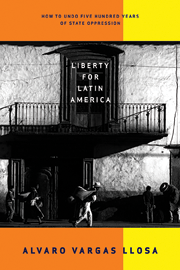House Republicans should be at the forefront of immigration reform, not Democrats.
Conservatives often accuse liberals of constructivism and social engineering—i.e. trying to impose their rigid, unrealistic preferences on society. The trouble with current immigration policy is precisely the disconnect between laws that hinder the natural course of things and a reality that is more flexible than politicians understand. Despite its flaws, including attempts to anticipate the number of future immigrants needed and costly bureaucratic aspects relating to border security and employer verification, the reform bill approved by the Senate more than a month ago tries to bring the law closer to reality.
Over the years, the laws became unenforceable and had all sorts of unintended consequences. As a result, the authorities themselves often turned a blind eye to what was happening on the ground. As is often the case when government norms and real life are wide apart, comical absurdities have periodically taken place. A so-called Texas Proviso in the United States made it legal for thirty years to hire an unauthorized worker to mow someone’s lawn, yet illegal for the employer to bring the worker into the house to drink a glass of water.
After restrictions were placed on Japanese immigration in 1907 and, particularly, after new laws targeted Eastern and Southern European immigrants in the 1920s, employers started recruiting Mexicans in big numbers, unleashing a sequence of events whose lasting consequences the government did not anticipate. In 1965, the new watershed legislation eliminated the national origins formula prevalent at the time, established some hemispheric limits, and emphasized family reunification. The authorities failed to see that, because Americans of European origin had few foreign relatives still alive, there would be a very significant increase in annual admissions from other regions.
The ending of the Bracero guest-worker program in the mid-1960s was a clear failure to recognize the reality of an American agribusiness dependent on Mexican labor. The program had helped bring illegal immigration to negligible numbers. After it was scrapped, unauthorized immigration picked up strongly.
Towards the end of the century, the Clinton laws had the effect of increasing the number of illegal Mexican residents not because of a surge in entries, but because of a precipitous drop in the number of departures by people who would otherwise have continued to come and go based on seasonal demand.
By contrast, the current bill attempts to close the gap between the law and reality. Yes, it offers the eleven-plus million undocumented immigrants and blue status agricultural workers a (long) path to permanent residence, but just as importantly it envisages a certain amount of flexibility in the future. For instance, the cap on merit-based visas (a new category) will start at 120,000 but will be raised to 250,000 if market conditions so dictate. Similarly, the number of high-skilled visas could go up to 180,000, while the cap on low-skilled visas, which will start at 20,000, could go as high as 200,000. In the case of family reunification, the numbers could reach 480,000.
Although even these limits could prove unrealistic in the long run, the spirit of the bill takes into account the lessons from the past, when visas and permits were capped with almost no degree of flexibility or consideration for supply and demand.
These past few years have shown that the flow of immigrants is impossible to anticipate. Between 2000 and 2005, about half a million people sneaked into the country every year—but the number dropped by two thirds between 2007 and 2009. Similarly, the number of people wanting to leave Mexico is unpredictable. According to Mexico´s National Survey of Occupation and Employment, Mexican emigration has dropped by sixty percent.
It is equally futile try to determine how many immigrants are needed in specific industries, as some are suggesting in order to drastically reduce the caps contemplated in the reform bill. Contrary to widespread perception, only 11.6 percent of foreign-born people employed in the U.S. work in construction, extraction and maintenance jobs, while almost thirty percent work in management and professional jobs, eighteen percent in sales and office jobs, and two percent in farming. Imagine the absurdity of a system that skewed the issuing of permits towards, say, construction and farming. The current bill, therefore, concentrates on broad categories rather than specific industries.
House Republicans should start looking at immigration reform with a healthy mistrust of top-down solutions and an open-mind towards the changing dictates of human interaction.












